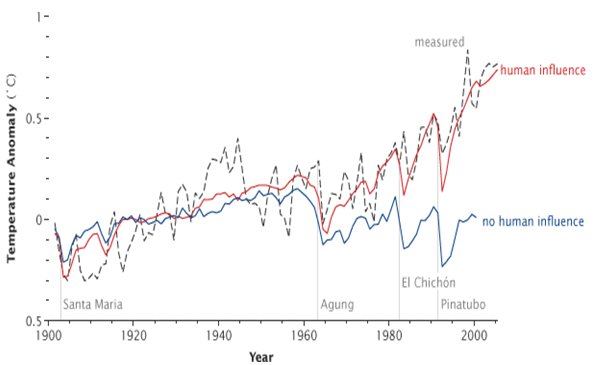Global warming

In the previous article, we discussed primarily natural climate change and anthropogenic climate change. Further, we realized that the global warming was just one indicator of the changing climate but was the most dominating, most damaging sign of the current changes in the climate system. In this article, we will focus on the global warming.
What is global warming?

In brief, global warming refers to the increasing trend in the average temperature of the Earth’s surface and its lower atmosphere. As we discussed earlier, it is responsible for most of the natural disasters with which we are struggling today.
In order to fight against the increasing trend of the earth’s average temperature, a concrete understanding of the global warming is needed. This requires investigating, monitoring and modeling the changes in earth’s climate system.
How to investigate the changes in earth’s climate system
Climate scientists have been closely monitoring the behaviors of earth’s climate system and deeply studying the changes in earth’s temperature exclusively after the 1950s. They use different kinds of climate models and measurements to investigate, study and model the earth’s climate. Following is results of one such study.

Graph 01: Temperature anomaly in the last century [1]
Above chart illustrates the changes in the global climate system over the past century, under three different scenarios namely measured (dotted line), human influence (red) and no human influence (blue). The dotted line represents the actual (measured) temperature anomaly over time. It can be observed that the global temperature has been gradually increasing even though some small fluctuations can be seen. The human influence on the temperature has been remarkably increasing after 1970. By analyzing the red and blue lines, one can easily realize what sort of damage to the climate system we have done. According to the chart, the human influence on the earth’s average temperature has been climbed up while the no human influence has been gradually declining. Especially, the chart reveals that the human influence has been abruptly increasing after 1985.
The sharp increase in the average temperature that we observe today is predominantly due to the anthropogenic causes. The average temperature has notably increased after the industrial revolution. In particular, it has remarkably increased after the 1950s. It has been estimated that the average temperature of the earth has risen 0.9± 0.05 ˚C at 95% confidence since the 1950s unto the present [1]. Further, the intergovernmental panel on climate change (IPCC) has forecasted a massive jump in the average global temperature by 2100. According to their estimations, the increase in the average temperature will be in the range of 1.4- 5.8 ˚C [2].
Just to make your concerns alive
An increase of 0.9 ˚C in the average temperature changed the entire climate system leading to many natural disasters and extreme events.
So…
What will happen once the temperature rises further by 1.4 ˚C (in the lowest possible scenario)?
What will happen once the temperature rises further by 5.8 ˚C (in a worst case scenario)?
It is worth thinking but attempts stopping one’s heart.
Heavy use of fossil fuels and deforestation are two main anthropogenic causes of global warming. These human activities increase the concentration of heat trapping gases in the earth’s atmosphere causing the earth to warm up. The mechanism by which the earth’s atmosphere warms the earth’s surface and lower atmosphere is technically referred to as “greenhouse effect”. Next article will focus on natural greenhouse effect its importance and the enhanced greenhouse effect.
